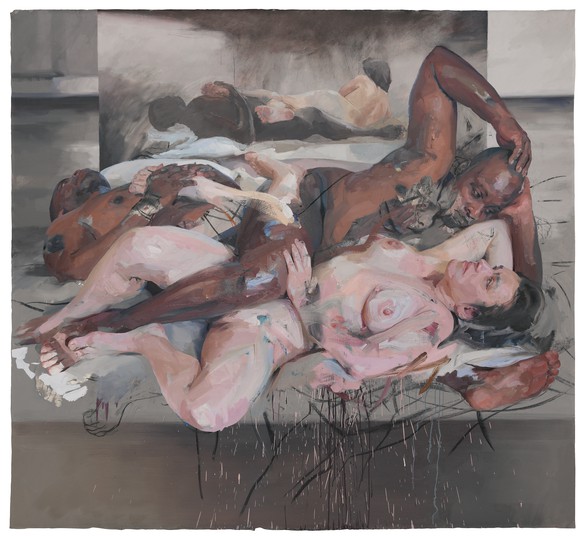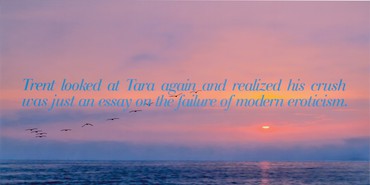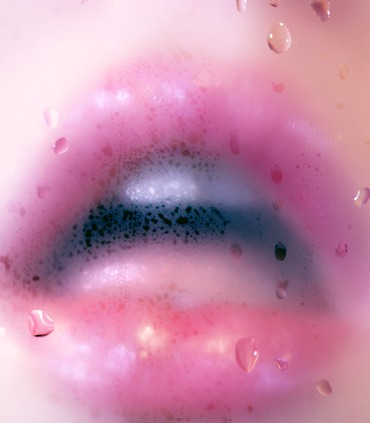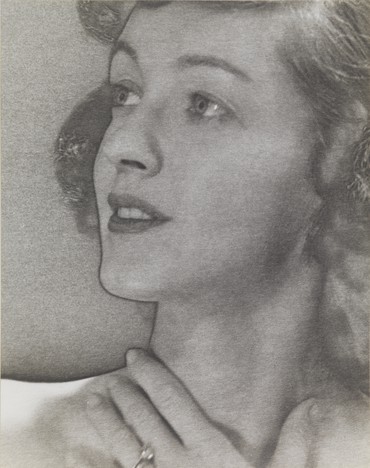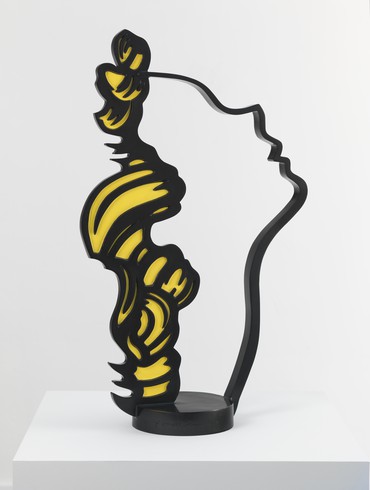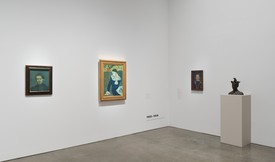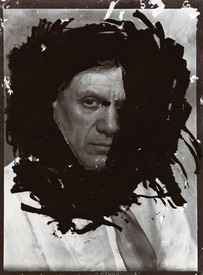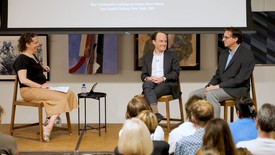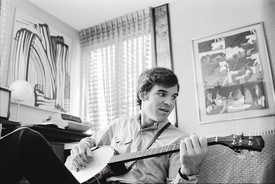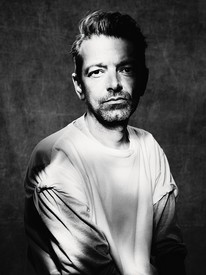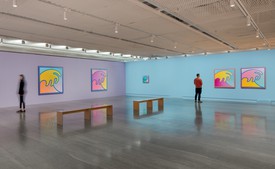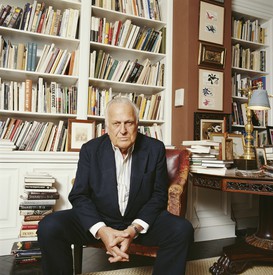
Diana Widmaier-Ruiz-Picasso is an art historian who specializes in modern and contemporary art. She holds master’s degrees in law (Paris-Assas) and art history (Sorbonne). She wrote her thesis on the art market of the seventeenth century and is the author of numerous essays. With Gagosian, she has curated the exhibitions Picasso’s Picassos: A Selection from the Collection of Maya Ruiz-Picasso and Picasso and Maya: Father and Daughter.
Desire marks the culmination of my long-standing interest in art and eroticism. In my book Picasso: Art Can Only Be Erotic (Prestel, 2005) I argued for my grandfather’s utmost capacity to love and to expand his thrill for lust all around his work. He once said, “It is age that forces us to stop, but we still want to smoke. The same goes for making love: you can’t do it anymore but you still want to.” This exhibition sheds light on contemporary artists who celebrate and question, through a wide range of media and artistic expressions, the theme of desire, revealing their overabundant sensuality and power of imagination. Their approach to eroticism oscillates between fascination, sensuality, pleasure, and fantasy but also spirituality, symbolism, and abstraction.
Abstraction
In the vein of Marcel Duchamp’s aesthetic of sexual desire, both Ed Ruscha and Alex Israel produce visual and linguistic systems. In Desire (2013) Ruscha mixes clear white lettering with an image of an atmospheric landscape, while Israel and American author Bret Easton Ellis’s collaboration Trent Looked at Tara (2016) combines texts by Ellis (Less Than Zero, 1985) with photography. Tara and Trent, two sexually destructive characters, encounter each other here in a doomed love story.
Beyond desire
Jordan Wolfson emphasizes the idea of desire as an absurdity. With Animation, Masks (2011) Wolfson presents a single, intensely engaging video, focused on a grotesque, animated caricature of a Hasidic Jew, who recites, among others, Richard Brautigan’s “Love Poem” and, more affectingly, the intimate words of two young lovers, while flipping through a recent edition of Vogue.
Other artists release their emotions and inhibitions through art. They express their deepest fantasies with explicit sexual depictions mainly focused on carnal pleasure. Gaspar Noé, best known for directing the film Love (2015), created a series of warm, red-lit photographs especially for the exhibition, which show a couple engaging in intercourse. The red color and the tight framing emphasize and focus on the sexual act, flirting with pornography. In a different manner, pornographic scenes inspire John Currin’s paintings of women. He depicts eroticized subjects, exploring libertine fantasies through the prism of art history. While Francis Picabia’s Madonna and Child with Nude (c. 1935–36) mixes classical style with the artist’s own vision of the female body, Joe Coleman’s The Three Graces (2016) reinterprets a major theme of art history using images and symbols that refer to erotic spirituality. Like the fantastical and mystic collaborative drawings of pascALEjandro Jodorowsky (the director Alejandro Jodorowsky and his wife, Pascale, combined their first names to form the portmanteau), Necrophonia (2011) is a joint project made by Urs Fischer and Georg Herold. The artists have created sculptures based on nude models, which will be activated by live models in the installation.
Voyeurism
Voyeuristic art explores the thrill and controversial behavior of watching others engage in private, intimate acts. Artists invite the audience into their lives, raising questions about participation, distance, observation, and the sanctity of one’s public image. Francesca Woodman depicts herself or female models. In her timeless work, she looks at the representation of the body in relation to its surroundings in an unconventional and ethereal manner. Jeff Koons’s Made in Heaven series (1989–91) depicts Koons’s sexual escapades with his then wife, the onetime Italian porn star Ilona Staller, known as Cicciolina. Blurring the boundaries between fine art and pornography, Koons challenged the conventions of artistic taste, encouraging his audience to make their own decisions about what is acceptable. On the contrary, Carlo Mollino’s series of erotic Polaroid portraits of naked female bodies (c. 1962–73) were kept private until his death. Balthus also used a Polaroid camera in the last decade of his life in order to make numerous instant photographic “sketches” (c. 1999–2000) for his paintings, depicting his last model, Anna. Combining photographs and painting, Richard Prince’s Djuna Barnes, Natalie Barney, Renee Vivian and Roman Brooks Take Over the Guahnahani (2008) shows his infatuation with the female form. He magnifies the erotic in the models’ photographs, redefining concepts of authenticity, whereas his Untitled (portrait) (2014) was taken directly from Instagram. Known for their erotic imagery, the photographers Nobuyoshi Araki and Noritoshi Hirakawa depict female nudes in a provocative way. Araki’s painted photographs of nude portraits are inspired by ancient and modern Japanese traditions, and clearly influenced by the Japanese art of shunga. In Araki’s images, women reveal their genitals; in Hirakawa’s Dreams of Tokyo series (1991), the photographer shares his fascination with secret displays of nudity in public places. With Jennifer (2011) and Amber (2016), John DeAndrea produces realistically cast nude figures and blends latex acrylic paint into realistic flesh tones, making his sculptures look more and more like real people. Pablo Picasso’s vision of his final lover, Jacqueline Roque, seated in his favorite rocking chair in Femme dans un rocking-chair (1956) focuses in a suggestive way on the intimate and sensual atmosphere inspired by the oriental ambiance of Matisse’s odalisques.
Eroticism reinvents itself with every subsequent generation.
Diana Widmaier Picasso
Cartoons and expansion of desire
Several artists, originators of the “adults only” comic book scene, use their talent to draw sexually explicit scenes. On the one hand, Tom of Finland lived out his most personal fantasies through an ongoing eponymous character, Kake, in his panel stories (1968). This hypermasculine, dark-haired, mustached leatherman travels the world on his motorcycle to spread the seeds of liberated, mutually satisfying, ecstatically explicit gay sex. On the other hand is R. Crumb’s 1985 Psychopathia Sexualis, an illustrated version of the 1886 classic by the psychiatrist Richard von Krafft-Ebing, a pioneer in cataloguing sexual aberrations and popularizing such terms as sadism and masochism. By embracing and disclaiming their sociocultural environs, artists seem to strike a balance between their art and the moral values in today’s society. In Positive Grid (1993–2000) Nan Goldin portrays friends infected with HIV in order to give a more human face to statistics. These photographs are a positive study of moments of lovemaking, happiness, and loneliness among people facing the disease.
Lust will always have an important role to play in the political consciousness. Looking at erotic art may be a challenge for some of us, for others it may speak to a silent and deeper layer of consciousness. Either way, the art will resonate within us. Eros holds back Thanatos. Short of death, only desire can move us beyond the plane of our existence.
